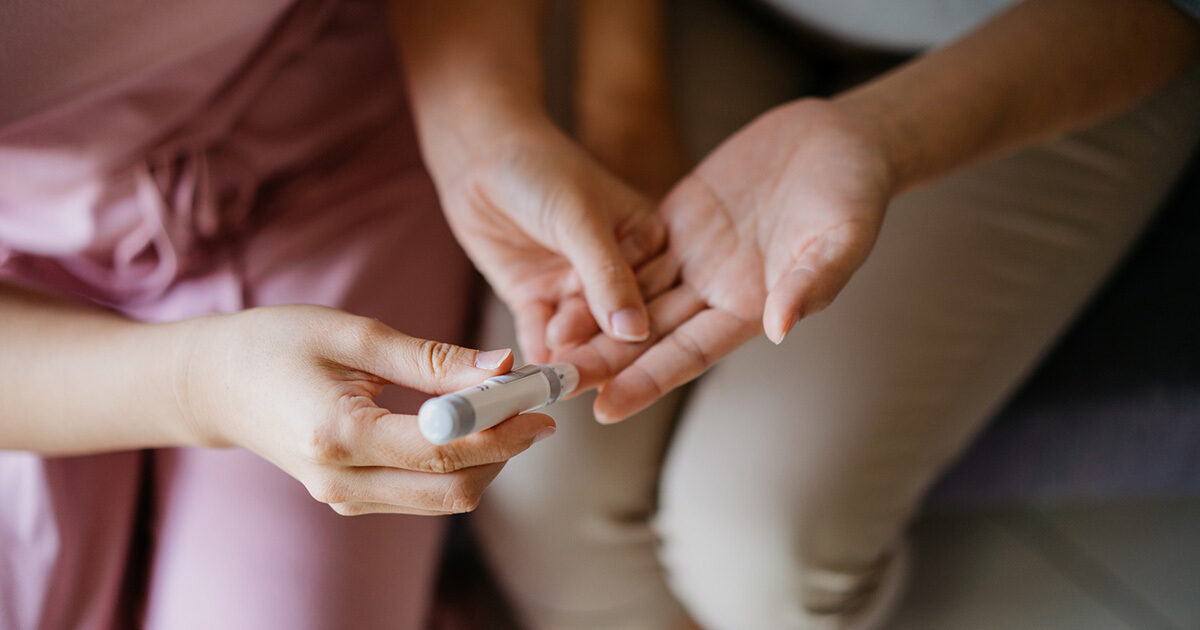Diabetic Retinopathy: Risks and Prevention
Vision damage resulting from high blood sugar is common among people with diabetes, but it isn’t inevitable, says Eileen Bowden, MD
Reviewed by: Eileen Bowden, MD
Written by: Lauren Schneider

In patients with diabetes, high levels of sugar in the bloodstream wreak havoc on blood vessels. Among the tissues vulnerable to this vascular damage is the retina, the structure at the back of the eye that converts light into a signal that can be interpreted by the brain. When the vessels in the retina leak blood or other fluids, it can cause serious vision problems, a condition known as diabetic retinopathy.
“Diabetic retinopathy is the leading cause of new cases of blindness in adults,” says Eileen Bowden, MD, an ophthalmologist at UT Health Austin’s Mitchel and Shannon Wong Eye Institute. She adds that 4.2 million adults in the United States have been diagnosed with the condition.
While the condition is a common complication of diabetes, patients can take steps to prevent diabetic retinopathy. “Early diagnosis and treatment are critical to preserving vision,” says Dr. Bowden.
Know your risk
People with any type of diabetes may develop retinopathy, but those who have had diabetes for longer are at greater risk. “People with type one diabetes tend to be diagnosed at a younger age, so they may be at higher risk as they get older,” notes Dr. Bowden. She adds that in addition to Type 1 and Type 2 diabetes, people with gestational diabetes, which manifests during pregnancy, are also at risk for diabetic retinopathy.
Get screened regularly
Dr. Bowden encourages patients with all forms of diabetes to undergo regular preventive screening for diabetic retinopathy. “During these exams, we dilate the eyes so that we can view the retina, where we look for abnormal blood vessels or areas of bleeding that can be caused by diabetic retinopathy. We also do a special scan of the retina that looks for increased fluid or bleeding as well,” she explains.
This screening can detect diabetic retinopathy before symptoms emerge. Once diagnosed, a patient can work to halt disease progression by controlling their blood sugar. If diabetic retinopathy is not detected early, the condition can progress to an advanced form associated with significant vision loss.
Patients with this advanced retinopathy can be given an injection that prevents swelling and bleeding of the retinal vessels. “Before we had these medications, patients unfortunately lost a lot of vision, but these treatments help us preserve our patients’ eyesight,” says Dr. Bowden.
Aim for lower blood sugar levels
Dr. Bowden says the best time to stop the progression of diabetic retinopathy is before the condition develops. Diabetic patients can accomplish this by lowering their blood sugar.
“Our clinic offers extensive counseling on ways to better control blood sugar in conjunction with the patient’s primary care doctor or endocrinologist,” she says. “Patients should also know about free programs that are available to help with controlling diabetes. At the national level, the Centers for Disease Control and Prevention (CDC) offers a lifestyle change program for people at risk for diabetes, and here in Austin, we have many programs that are free through Austin Public Health.”
Even after the onset of diabetic retinopathy, lower blood sugar can dramatically impact disease progression. “I’ve had patients who have come in with early disease who make changes to their diet and lifestyle after diagnosis. Not only do they reverse their diabetic retinopathy and cure it, but they also improve their diabetes in general,” says Dr. Bowden, noting that these patients experience a broad array of benefits from addressing their underlying diabetes. “It’s helpful for the whole body.”
While major lifestyle changes can be daunting, Dr. Bowden says that simple actions can cause significant improvement. “Even something as simple as taking a daily walk is really impactful.”
Additional resources about diabetes management from the American Diabetes Association can be viewed here.
To learn more about the Mitchel and Shannon Wong Eye Institute or to schedule an appointment, click here or call 1-833-UT-CARES (1-833-882-2737).